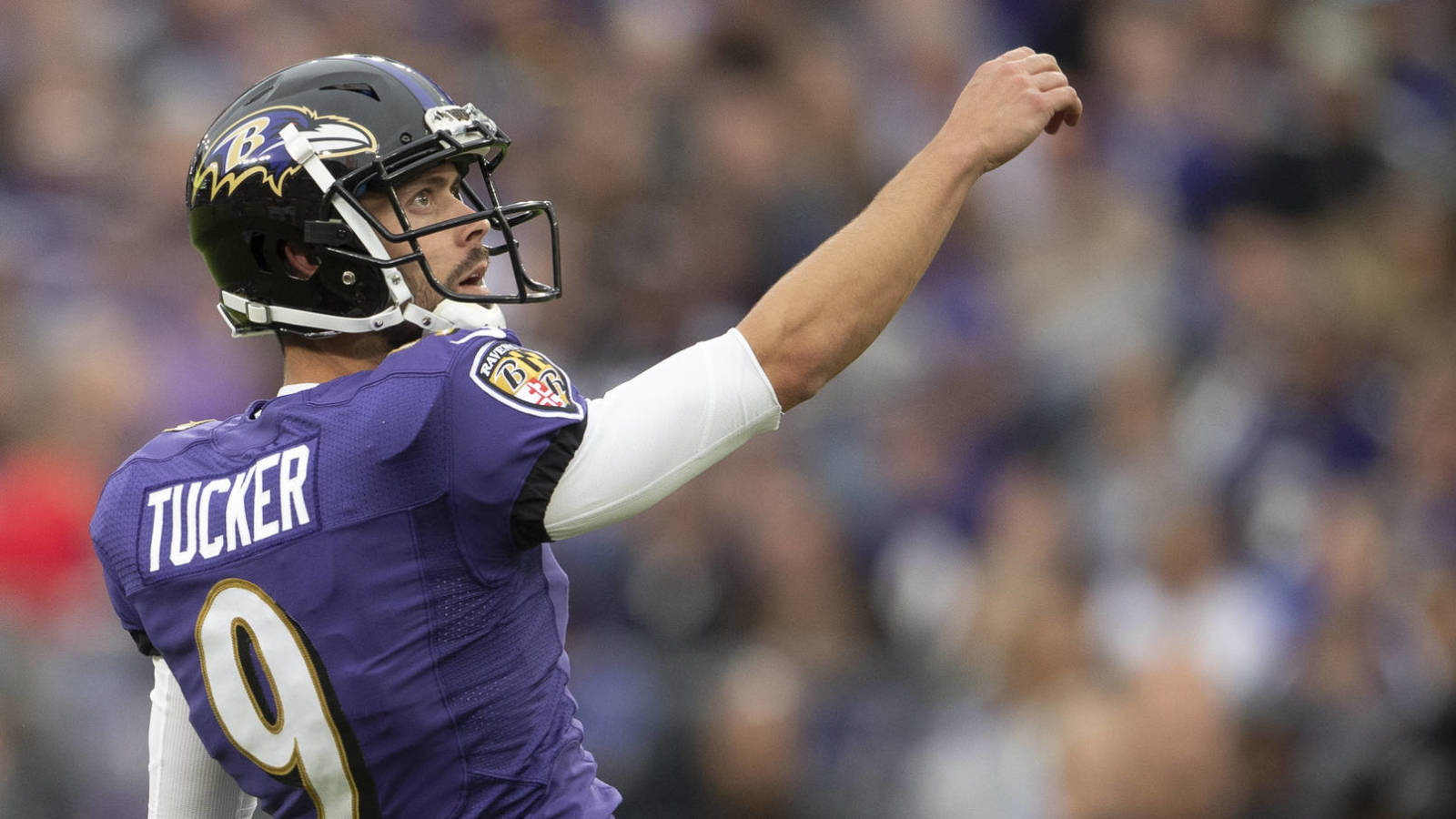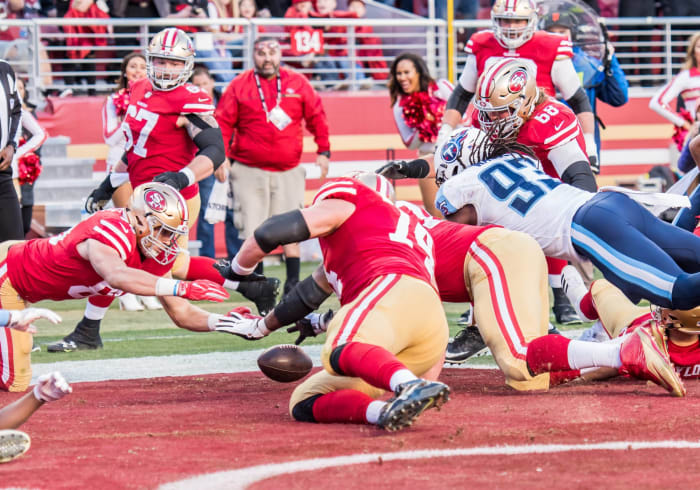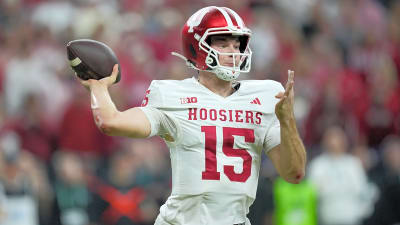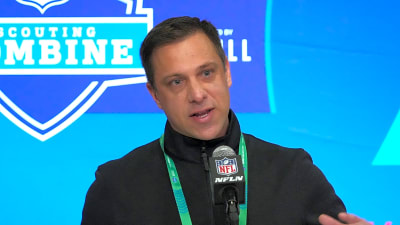
Wacky NFL rules changes we'd love to see
Yardbarker NFL writers Michael Tunison and Chris Mueller address some of the hottest issues in the league. This week's topic: rules changes that would improve the NFL.
Mueller: The NFL has killed the onside kick. No kicking team has successfully recovered one this season, though the Chargers and Cowboys had near-misses in Week 6. That might not seem like a monumental development, but the play at one time had a 12 percent chance of success.
It’s hard to get too mad at the league for the changes that have resulted in teams being 0-for-16 this season on onside attempts, a year after the league went 4-for-56. Between 2017 (11-for-54, 21 percent success rate) and 2018, new rules for onside kicks were adopted that eliminated the running start for coverage teams, and stipulated that five players must line up on each side of the kicker.
The new rules have contributed to a 35 percent drop in concussions on kickoff plays, but much of the late-game drama and excitement created by last-ditch attempts to rally for a win are lost. There are several ideas how to fix onside kicks, but in addition to pursuing those, the league should tweak another aspect of the game: field goals.
The field goal kick is too easy, and late-game situations are anticlimactic as a result. Last season, kickers went 205-for-208 on kicks of 20-29 yards, a 98.6 percent success rate, and 273-for-290 from 30-39 yards, a 94.14 percent success rate. Both figures were records. Overall, kickers made 84.7 percent of their attempts in 2018, the second-best conversion rate on record, after 2013’s 86.5. (In 2019, kickers have made 94.2 percent of extra point attempts, 80.5 percent of field goal attempts.)
Many die-hard fans bellyache about how too many games are settled by specialists. I have a solution, counter-intuitive though it may be, and it’s something the league toyed with at the Pro Bowl in 2015. Make the uprights narrower for shorter kicks. The standard width of 18 feet 6 inches has been in place nearly 100 years, but it’s time to change that.
From 50 yards or more, things can stay the same. Those are still tough enough that nothing needs to be changed. From 40-49, bring things in a foot. Get even closer, and the kick gets even tougher — kicks between 30 and 39 yards should be to uprights 15 feet 6 inches apart. Lastly, 20-29 yarders should be to uprights a mere 13 feet 6 inches wide, a full five feet narrower than standard.
Surely an entity with pockets as deep as the NFL’s could develop adjustable upright technology; if the league doesn't want to do it on its own, inventors would line up to get rich with design blueprints. This change would result in more nuanced strategic planning — would your kicker rather kick a 41-yarder or a 38-yarder? — as well as more teams going for touchdowns rather than kick a not-so-easy short field goal.
The “real” players would settle games more regularly. And the best kickers would truly earn their pay. Perhaps Baltimore's Justin Tucker would be even more valuable. Who cares if it punishes success? Offense has gotten too easy anyway. The status quo is boring, and this change would create plenty more thrills.

Tunison: I like the overall structure of college football overtime, yet I prefer to keep the concept of ties a possibility in the NFL, because they're one of the most hilarious things to happen during a season. Everyone looks confused or constipated. Ties can also deflate the sometimes corny winner-takes-all aggression of the sport. And besides there are only maybe three or four per year anyway, so it's a rare treat.
Therefore, I propose a compromise: The NFL should adopt the broader structure of college football overtime -- each team gets a possession starting from the opponent's 25-yard-line. If it's still tied after both of those possessions, the teams do it all over again. If it reaches a third overtime, teams must attempt a two-point conversion after every touchdown.
I'll add to that by banning field goals of shorter than 40 yards in the third overtime and beyond. In fact, you could add a stipulation that if the team with the ball opts to go for a field goal in the third or fourth overtime, it must be a 45-yard attempt, no matter where the offense had the ball when it made that decision. If after four overtimes the score remains even, we have an honest-to-goodness tie game.
This way, you avoid the situation from last season's AFC Championship Game in which the Chiefs lost without Patrick Mahomes ever getting the ball in overtime. There would be more points (and more fantasy points), some interesting strategizing in the third and fourth overtime, and still after all that the possibility of the beautiful tie.

Mueller: I can't remember what my immediate reaction was for how last season's AFC Championship Game ended, but regardless of what it was, it seems absurd Mahomes didn't get a crack at matching New England's touchdown. And while purists might counter with, "The Chiefs should have stopped them then," I'd posit that the NFL routinely changes rules to try to accommodate more offense and put star quarterbacks on display.
The league should do whatever it must to ensure that both teams get the ball in overtime. The college-style system still feels gimmicky to me, so let me offer a compromise to your compromise: Each team is guaranteed the ball at least once in overtime, no matter what. Those two initial possessions are contested traditionally, and if the teams are still tied, then the college rules kick in. Everything you suggested, I'd happily adopt.
Here's one major tweak for the playoffs, though: Make overtime one extra quarter. Whichever team is ahead at the end of that 15-minute period is the winner. No rules about scoring first, it's just an extra period of football. A true fifth quarter. I recognize that football is an exceedingly violent sport, and that adding 15 minutes of brutality in the most intense games of the season comes with a physical toll, but it's a small price to pay for a truer, more legitimate outcome.
While I'm brainstorming, here's something else: The league loves offense, and this melds that love with something that adds more drama, particularly late in games. The two-point conversion was revolutionary in that it made many more games one-possession affairs, so why not make nine-point possessions possible? Here's how: If a team scores and successfully goes for two, it gets one extra point if their kicker knocks the kickoff through the uprights. If he fails, the other team gets the ball at its own 40. Baltimore unsurprisingly wanted something very similar to this, minus the field position penalty for missing.
This rule would affect roster construction, with perhaps a one-point kicker considered, and it would likely cause teams to be more aggressive. Plus, it would be fun to see which coaches would adjust to the sport's new math the quickest. (Bill Belichick would lead the way.)

Tunison: Overtime structure is one of those rules that always prompts hot take-laden conversation when it's relevant in a high-profile, regular- season game or in the postseason. Another rule that generally gets forgotten about until it snakebites a team is the one that dictates fumbling through the end zone constitutes a turnover by the offense.
There are valid arguments for and against. I understand the one that holds that scoring opportunities are so valuable and care with the ball so necessary in the red zone that the rules should reinforce those ideas. Though just because something seems logical doesn't mean I still can't find it overly punitive. Anywhere else on the field, a fumble out of bounds means the offense retains possession at that spot. Through the end zone, and it's suddenly a turnover.
Changing that is somewhat a favor to offenses, and they probably don't need that, yet I can't shake the poor taste I get from seeing a defense rewarded so well for a play in which one of their players doesn't even have to recover the ball. An offensive player could commit an unforced fumble through the end zone and it would be a turnover on par with a balletic interception. It also just seems weirdly anti-climatic. One team can put together a methodical drive to get to the end zone, and suddenly it's over without anyone retaining possession.
The question is, if the offense is allowed to retain possession in a rule change, what is the punishment then? Placing the ball on the 2-yard line seems too light, and might even inspire teams to purposely fumble in some instances. I think putting the ball back on the 20 on the following down is enough to make it sufficiently punitive that teams won't want to fumble it through the end zone, but still have a chance to make something of the drive. As hilarious as it was when this rule cost the Raiders a win a few years ago, the replacement is less jarring and more fair.
More must-reads:
- Even famous NFL alumni know the league must fix its broken officiating. Now.
- NFL Week 7 matchups: An insiders' guide
- The 'NFL's active 300-yard passers' quiz
Customize Your Newsletter
 +
+
Get the latest news and rumors, customized to your favorite sports and teams. Emailed daily. Always free!








